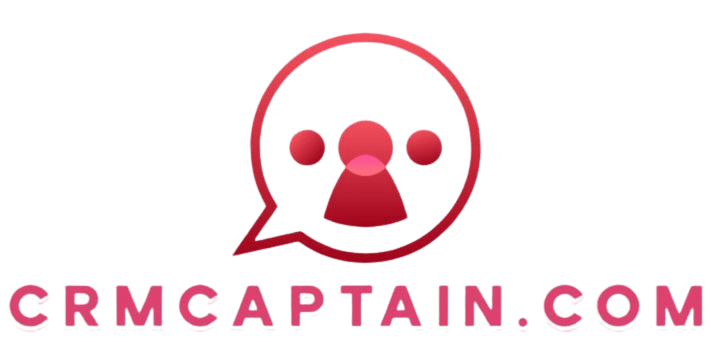How to Utilize CRM Analytics for Better Insights
In today s data-driven landscape, grasping customer behavior and preferences is essential for achieving business success.
CRM Analytics provides you with powerful insights that can elevate customer engagement, drive growth, and enhance profitability.
This article delves into the myriad benefits of CRM Analytics, the key metrics you should be tracking, and the best practices for seamless implementation.
By selecting the right tools and effectively integrating analytics into your business processes, you can unlock the full potential of your customer relationships. This will empower you to make informed decisions that propel your business forward.
Contents
- Key Takeaways:
- Benefits of Utilizing CRM Analytics
- Key Metrics to Track with CRM Analytics
- Implementing CRM Analytics
- Best Practices for Utilizing CRM Analytics
- Frequently Asked Questions
- What is CRM Analytics and why is it important for businesses?
- How can I utilize CRM Analytics for better insights?
- What are the benefits of utilizing CRM Analytics?
- How can I use CRM Analytics to improve customer experience?
- What types of data can be analyzed using CRM Analytics?
- How often should I analyze CRM data for better insights?
Key Takeaways:

Using CRM analytics can improve customer understanding and engagement. This leads to stronger relationships and increased retention.
Tracking key metrics like customer lifetime value, churn rate, and campaign effectiveness can help drive business growth and profitability.
Implementing CRM analytics requires choosing the right tool and integrating it into business processes. For effective implementation, using CRM to enhance customer experience by maintaining data quality and conducting regular analysis and reporting is also crucial.
What is CRM Analytics?
CRM Analytics is all about diving into the treasure trove of customer data gathered through various touchpoints in your Customer Relationship Management (CRM) systems, like Salesforce CRM. This process allows you to uncover actionable insights that can enhance your customer relationships and drive business performance.
By harnessing advanced analytical techniques, including machine learning and AI, you can gain a deeper understanding of your customer base. This helps streamline your sales process.
Key components of CRM Analytics include:
- Customer management tools that automate customer-facing processes for efficiency.
- Analytical tools that focus on data analysis to forecast trends and refine strategies.
By tapping into consumer data from purchase histories to feedback you can tailor your marketing efforts and enhance your service offerings.
Technologies such as predictive analytics tools, data visualization platforms, and customer segmentation software elevate your CRM analytics capabilities. This enables you to transform raw data into meaningful insights. This strategy boosts customer loyalty and sets the stage for lasting growth.
Benefits of Utilizing CRM Analytics
CRM Analytics unlocks incredible advantages for your business that you can’t afford to miss! You ll experience enhanced customer service, foster increased loyalty, and significantly lower retention costs. All of these contribute to improved conversion rates and a deeper understanding of your core demographics.
By meticulously analyzing consumer data, you can track interactions with precision. This allows you to tailor your strategies to genuinely meet customer needs.
Improving Customer Understanding and Engagement
Improving your understanding of customers and engaging with them through CRM analytics is essential for elevating your customer service. This cultivates lasting loyalty.
By harnessing consumer data, you can track interactions, assess customer turnover, and measure key metrics like First Contact Resolution and Customer Effort Score. This comprehensive approach enables you to refine your strategies, focusing on personalization and responsiveness that truly resonate with customer preferences.
By gathering consumer data through surveys, feedback forms, and social media interactions, you gain invaluable insights into behavior and expectations. For instance, a well-known retailer effectively utilized CRM analytics to analyze shopping patterns and adapt its marketing efforts, resulting in a substantial boost in repeat purchases.
This level of attentiveness not only fortifies customer loyalty but also nurtures a deeper connection. It ensures that customers feel valued and understood throughout their journey.
Start utilizing CRM Analytics today to reap the benefits outlined above!
Driving Business Growth and Profitability
Driving business growth and profitability is a significant advantage of CRM analytics. It enables you to turn potential customers into buyers and optimize renewal rates for existing customers. This is often tracked through metrics like the Net Promoter Score, which measures customer loyalty and satisfaction.
By harnessing tools such as Salesforce CRM, discover how to analyze customer interactions to uncover opportunities for expanding revenue.
Implementing segmentation strategies allows you to categorize your customers based on behaviors, demographics, or purchase history. This enables you to tailor your marketing efforts effectively.
For instance, a retail company could use CRM analytics to pinpoint high-value customers and target them with exclusive offers. This approach can lead to a substantial increase in repeat purchases.
Engaging in A/B testing helps you find out which messaging resonates best with different segments, ultimately boosting conversion rates.
Organizations that use this knowledge frequently experience a notable rise in both customer satisfaction and overall profitability. This highlights the transformative power of insightful analytics in strategic decision-making.
Key Metrics to Track with CRM Analytics

Tracking key metrics with CRM analytics is vital for evaluating your organization’s performance and making informed, data-driven decisions.
By focusing on essential metrics like customer lifetime value, churn rate, and campaign effectiveness, you can effectively measure success and refine your strategies.
This approach, grounded in demographic analysis and customer behavior, allows you to adapt and thrive in a competitive landscape.
Customer Lifetime Value
Customer Lifetime Value (CLV) is a pivotal metric in CRM analytics. It allows you to estimate the total revenue you can expect from a single customer throughout their relationship with your business.
By grasping the concept of CLV, you can better assess retention costs and craft strategies that elevate customer loyalty. Calculating CLV enables you to make informed decisions about how much to invest in both acquiring and retaining customers.
For example, a retail company might discover through CLV analysis that it can justify a larger marketing budget. This is possible given that repeat purchases from loyal customers far exceed initial costs.
This valuable insight enables you to personalize your marketing campaigns, targeting high-CLV segments effectively.
Companies like Starbucks have mastered this approach by implementing loyalty programs that reward repeat customers. This strategy boosts their CLV through deeper relationships and encourages additional purchases over time.
Understanding Your Churn Rate: Why It Matters!
Churn rate is the percentage of customers who decide to part ways with a business over a specific time frame. It s crucial for CRM analytics. Understanding and managing churn rate is vital for enhancing customer retention and reducing turnover.
To measure churn rate accurately, track the number of customers lost against the total customer count at the start of the period. Various factors can contribute to churn, including customer dissatisfaction, pricing issues, and subpar service experiences.
CRM analytics plays a pivotal role in pinpointing at-risk customers. By analyzing engagement patterns, purchase history, and feedback, you can proactively tackle issues before they escalate to attrition.
Implementing targeted strategies, such as personalized communication and loyalty programs, can effectively lower churn rates, boost customer satisfaction, and cultivate enduring relationships.
Measuring Campaign Effectiveness
Measuring campaign effectiveness is essential to grasp how well your marketing efforts convert leads into sales and enhance overall conversion rates.
Utilizing CRM analytics enables you to dig into consumer data and assess the success of various campaigns. By employing methodologies like A/B testing, you can utilize CRM for better marketing campaigns and strategically compare different versions of your marketing materials to pinpoint which ones resonate more with your audience.
Establishing clear metrics for success such as click-through rates, conversion rates, and customer engagement levels is crucial for extracting meaningful insights.
Armed with these data-driven insights, you can refine your marketing strategies and tailor your efforts based on what truly works. This dynamic approach not only boosts campaign performance but also deepens your understanding of customer preferences and behaviors, ultimately driving higher sales and nurturing lasting relationships.
Start leveraging CRM analytics today to supercharge your business growth!
Implementing CRM Analytics
Implementing CRM analytics requires selecting the appropriate tools and integrating them into your existing business processes. This approach is essential to fully leverage the advantages of operational CRM, which helps manage customer interactions, and analytical CRM, which focuses on data analysis.
Choose analytics solutions that fit your unique needs and capabilities.
Choosing the Right CRM Analytics Tool

Selecting the right CRM analytics tool is crucial to harness the full potential of data. Options range from well-established platforms like Salesforce CRM and Tableau CRM to innovative solutions like Sprinkle Data, which leverages machine learning for deeper insights.
When evaluating your options, consider several key criteria:
- Scalability: Scalability is essential for growth. As your business expands, the tool should effortlessly handle increasing data volumes without sacrificing performance.
- Ease of Use: A user-friendly interface significantly affects how quickly your team adopts the tool and boosts productivity. A streamlined interface allows employees to learn quickly and extract insights with ease.
- Feature Set: Analyze the feature set carefully, as different tools come with unique functionalities from comprehensive reporting to sophisticated predictive analytics.
For instance, Salesforce CRM excels in customization and integration, making it a top choice for larger enterprises. On the other hand, Sprinkle Data s focus on machine learning is ideal for organizations seeking advanced data synthesis and real-time predictions.
Integrating CRM Analytics into Business Processes
Integrating CRM analytics into business processes is essential for helping your customer service teams leverage insights effectively. This enhances customer interactions and elevates overall satisfaction.
Through seamless integration, you can track customer interactions across multiple touchpoints. This enables your teams to understand customer behavior and preferences in real time.
To fully reap these rewards, invest in comprehensive training programs that equip your staff with the necessary skills to utilize CRM tools effectively. Aligning your processes with insights from CRM analytics can drive strategic decision-making, leading to superior outcomes.
By establishing standardized protocols that incorporate these insights, you create a more cohesive experience while fostering stronger relationships with customers.
Best Practices for Utilizing CRM Analytics
Implementing best practices for utilizing CRM analytics allows you to harness the full potential of consumer data for knowledge-based decision-making and strategic formulation, as discussed in integrating analytics tools: a CRM perspective.
Essential practices include ensuring high data quality, conducting regular analyses, and establishing comprehensive reporting mechanisms that provide valuable insights.
By adhering to these principles, you can elevate your organization’s data-driven strategies and achieve remarkable results.
Data Quality and Management
Data quality and management are paramount for successful CRM analytics. Accurate and reliable consumer data directly influences the insights you glean from both operational and analytical CRM systems.
To maintain high data quality, implement robust validation techniques, including automated checks during data entry and periodic reviews to identify anomalies and errors.
Regular audits are crucial for preserving data integrity and pinpointing areas that require improvement. Establishing a strong data governance framework helps define roles and responsibilities, ensuring accountability in data handling.
By consistently updating records, you enhance the accuracy of your insights and facilitate knowledge-based decision-making. This ultimately allows you to craft effective CRM strategies that truly resonate with your customers’ needs.
Regular Analysis and Reporting
Regular analysis and reporting are crucial in CRM analytics. They help track performance metrics and assess the impact of customer relationship strategies on loyalty and business outcomes. Establishing a strong reporting routine creates clear communication and enables stakeholders to make informed strategic decisions.
Integrating tools like Tableau or Google Data Studio allows you to visualize data trends effortlessly, making it easier to spot patterns and anomalies. For example, an automated report that highlights customer engagement levels can unveil which campaigns truly resonate with your audience, providing valuable insights for future marketing initiatives.
Using cohort analysis helps you effectively group your customers, ensuring your strategies are targeted to enhance retention and elevate overall satisfaction.
Frequently Asked Questions

What is CRM Analytics and why is it important for businesses?
CRM Analytics involves collecting and analyzing customer data from various touchpoints and channels to gain valuable insights. It helps businesses understand their customers better, improve customer experience, and make data-driven decisions.
How can I utilize CRM Analytics for better insights?
To utilize CRM Analytics effectively, first identify your business goals and objectives. Then, choose the right CRM Analytics tool that fits your needs and integrates with your current CRM system. For further guidance on implementation, check out this resource on how to utilize CRM for customer feedback. Next, set up data collection processes and develop data dashboards for effective analysis and visualization.
What are the benefits of utilizing CRM Analytics?
Utilizing CRM Analytics can provide numerous benefits, such as identifying customer trends, improving segmentation and targeting, increasing retention and loyalty, optimizing marketing campaigns, and predicting future customer behavior. For a deeper understanding of these advantages, consider leveraging CRM analytics to see how well your sales and marketing strategies are working.
How can I use CRM Analytics to improve customer experience?
CRM Analytics can revolutionize your understanding of customer needs and preferences. With it, businesses can personalize interactions, anticipate needs, and provide relevant, timely offers or solutions. This approach leads to higher customer satisfaction, retention, and loyalty.
What types of data can be analyzed using CRM Analytics?
CRM Analytics can analyze various types of customer data, such as demographic information, transaction history, website and social media interactions, and customer service interactions. It can also combine data from different sources to provide a holistic view of the customer journey.
How often should I analyze CRM data for better insights?
The frequency of analyzing CRM data depends on specific business needs. Some businesses may need to analyze data in real-time, while others may do it weekly or monthly. Regularly reviewing and analyzing data is essential to track progress and make timely adjustments for better results.






